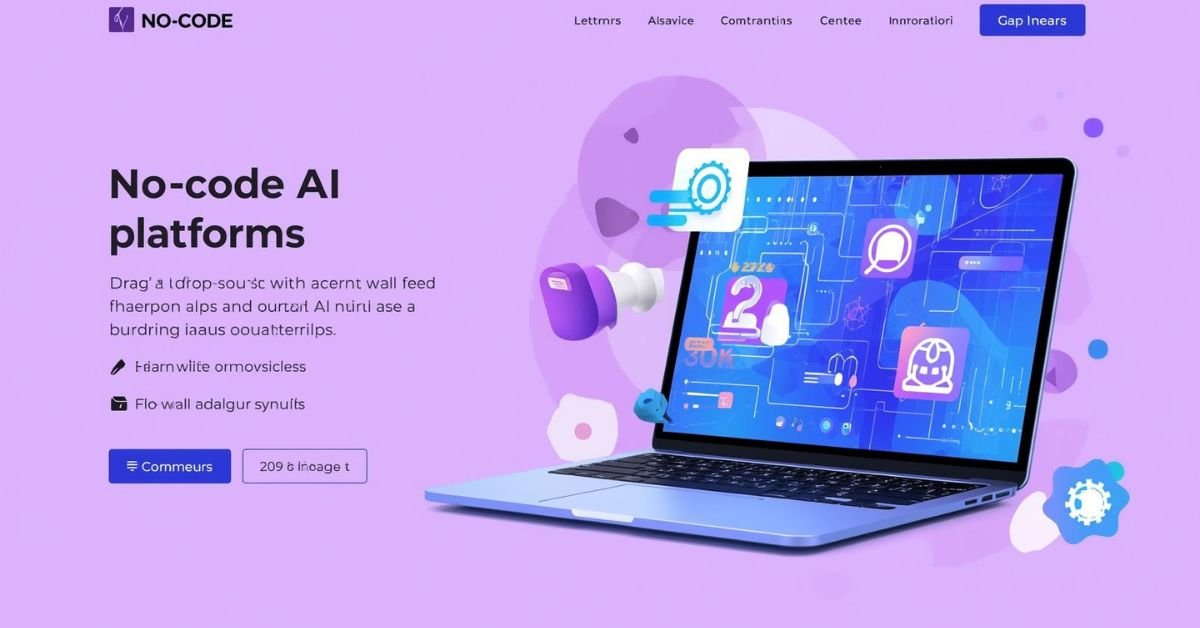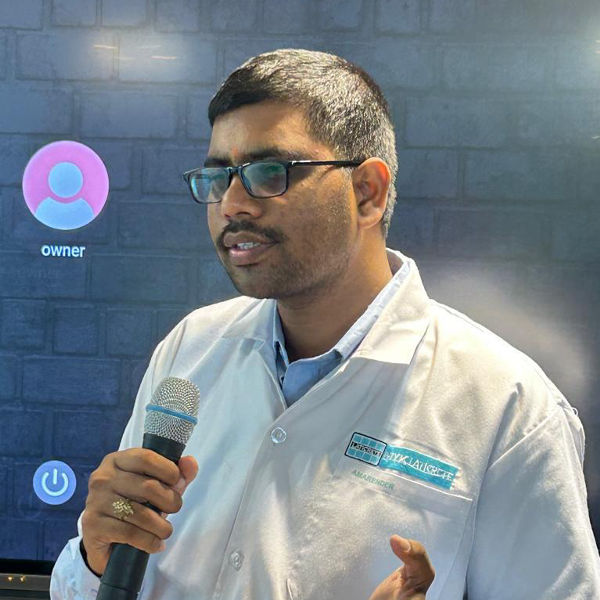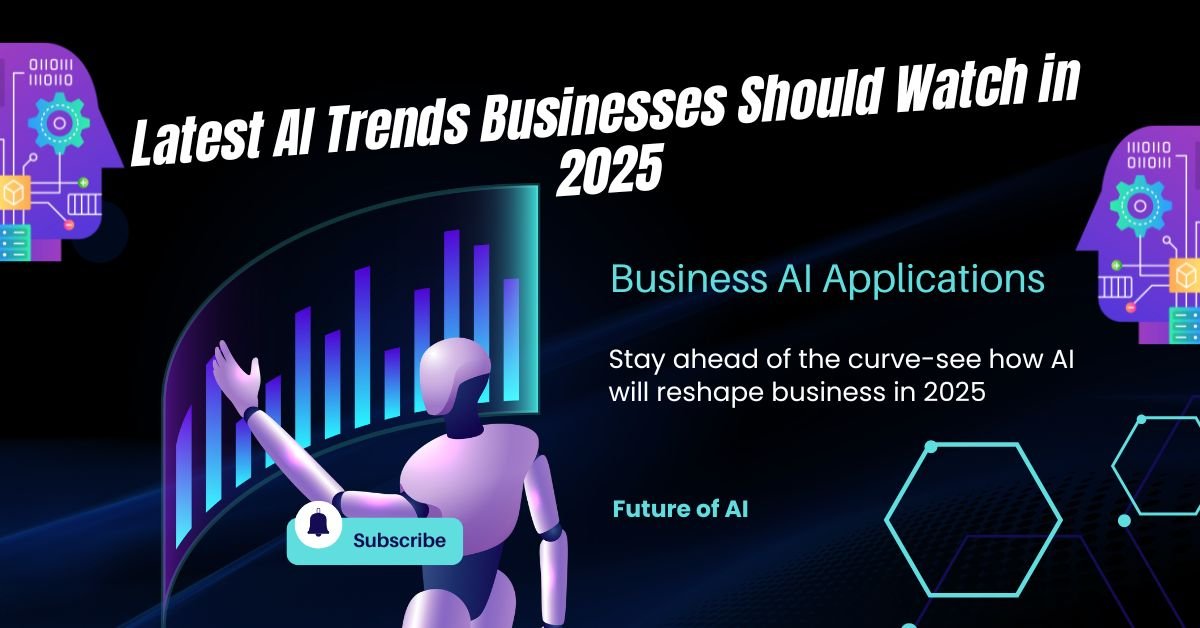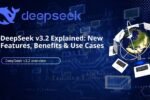It used to be only a test for AI. It makes decisions for businesses, improves customer experiences, and reshapes entire industries. Understanding AI Trends 2025 is no longer just an academic exercise-it has become a matter of strategic survival. Businesses that are open to change can adapt more rapidly, seize new opportunities, and handle challenges more effectively. By 2025, AI will impact virtually every aspect of an organization, from marketing to operations, giving forward-looking companies a clear advantage over their competitors.
This article discusses the most crucial AI trends that will happen in 2025. It uses statistics, research, and examples from the actual world to show both the good and bad sides of things. The idea is to give businesses clear, useful information that helps them get ready for what’s coming.
AI will affect every part of the company by 2025, including marketing, operations, and customer service. For actionable strategies and case studies on how businesses are leveraging AI, see AI for Businesses: Strategies, Tools, and Case Studies. Companies that embrace AI early will have an advantage over their competitors, leading to growth, efficiency, and new ideas
Important AI Trends in 2025
1. Generative AI Grows Up to Become Business-Grade tools.
Generative AI used to be new, but today it is a key part of business operations. Understanding AI Trends 2025, Gartner predicts that more than 80% of businesses will adopt generative AI APIs or applications by 2026-a massive jump from less than 5% in 2023. This rapid growth highlights just how transformative the technology has become for commercial life.
Generative AI is no longer only a test. By 2026, more than 80% of firms are anticipated to use generative AI technologies to make content, design, and marketing easier.
Effect:
- The technology streamlines creative tasks such as content creation, design, and programming.
- Simulating prototypes accelerates the process of making products.
- This technology enables the implementation of targeted marketing campaigns on a large scale.
Chances:
- This approach offers the potential to save costs associated with content creation.
- New items get to market faster.
- Personalized experiences enhance consumer engagement.
Problems:
- The challenges include managing bias and disinformation.
- The challenge lies in safeguarding intellectual property.
- Making sure that new AI rules are followed.
Case Study: As part of AI Trends 2025, Coca-Cola leveraged generative AI to create innovative ads that blended customer interaction with storytelling about the brand. The result was higher engagement and faster, more effective campaign execution.
2. AI Trends 2025: AI-Powered Automation Goes Beyond Simple Tasks
Automation has evolved beyond simple repetitive tasks. As part of AI Trends 2025, AI will be capable of handling complex decision-making across business functions, improving efficiency and reducing costs. Learn about the essential AI tools that help businesses implement these solutions in our guide on Top 7 AI Tools for Businesses in 2025
Effect:
- AI controls supply chains that change.
- Smart systems make the best use of energy in manufacturing.
- AI-powered forecasting improves corporate planning.
Chances:
- There is an improvement in efficiency across all fields.
- Costs of running the business are lower.
- This flexibility allows for quicker adaptation to market changes.
Problems
- There is a risk of worker displacement.
- There is a skills gap in managing AI systems.
- Too much automation may make people less likely to make decisions.
As part of AI Trends 2025, Siemens uses AI in manufacturing to predict when maintenance is required. This reduces downtime and ensures more reliable production output.
AI Adoption and Impact Statistics 2025
To quickly understand the impact of AI in business by 2025, here’s a snapshot of key trends, adoption rates, and examples:
| AI Trend | Impact / Adoption | Example |
| Generative AI | 80% by 2026 – faster content | Coca-Cola |
| Automation | $4.4T boost – efficiency | Siemens |
| Multimodal AI | By 2025 – better interactions | Alexa |
| Sustainability AI | -4% emissions by 2030 | |
| No-code AI | 70% apps by 2025 | AutoML |
| Personalized AI | 80% want it – more sales | Netflix |
3. AI Trends 2025: Growing Support for AI Rules and Ethical Guidelines
As AI becomes increasingly widespread, concerns about ethics and safety are growing. In line with AI Trends 2025, the European Union’s AI Act will establish global standards when it is implemented in 2025, requiring companies to prepare for stricter compliance.
Effect:
- There will be a greater emphasis on promoting transparency.
- There will be more stringent inspections to ensure compliance.
- More focus on AI that can be explained.
Opportunities:
- Gaining the trust of customers is an opportunity.
- Making AI apps safer.
- We can differentiate ourselves by utilizing ethical AI.
Problems:
- Costs of compliance are higher.
- Longer cycles of invention.
- The world’s governing rules remain uncertain.
- According to a Deloitte poll, 62% of CEOs think that AI ethics are critical for a brand’s reputation.
4. AI Trends 2025: How Multimodal AI is Changing Human-Machine Interaction

Multimodal AI lets computers work with and interpret more than one sort of data at the same time, such as text, pictures, audio, and video. By 2025, better virtual assistants, healthcare diagnostics, and tailored shopping experiences will all be possible. This technology is changing how businesses communicate with customers and helping them make better decisions across many fields by providing highly entertaining and easy-to-use experiences.
Multimodal AI combines text, images, audio, and video into a single system. As part of AI Trends 2025, this technology is transforming how customers interact with products and how businesses manage manufacturing processes. Leaders in this space include OpenAI, Google, and Meta.
Effect:
- Virtual assistants that are smarter can understand voice, visuals, and gestures.
- Healthcare apps look at scans, reports, and patient information all at once.
- Retail employs multimodal AI to make purchasing more personal.
Chances:
- This could lead to more engaging experiences for users.
- This could lead to more accurate diagnoses in the field of health care.
- Online shopping has become more personalized.
Problems:
- More demanding computations.
- Data privacy is at risk.
- The complexity of integrating across platforms is a significant challenge.
For example, Amazon’s Alexa now lets you engage with it in more than one way, using both speech and graphics to make things more captivating.
5. AI for Green Tech and Sustainability

As part of AI Trends 2025, AI is helping businesses achieve their sustainability goals by optimizing energy use, reducing waste, and improving ESG reporting. For example, Google’s AI-powered cooling solution cut energy use in data centers by 40%. In a world that values the environment, AI-driven green initiatives will be essential for both company reputation and cost savings by 2025.
As part of AI Trends 2025, businesses are adopting greener practices due to climate change. AI supports smarter energy use, reduces waste, and enhances sustainability reporting. By 2030, AI could cut global greenhouse gas emissions by 4%, according to insights from PwC’s report on AI and sustainability.
Effect:
- AI improves logistics so that less gasoline is used.
- Smart grids keep the flow of electricity even.
- AI-powered analytics improve ESG reporting.
Chances:
- Successfully managing energy use can lead to a reduction in costs.
- This will enhance the brand’s reputation as a long-term leader.
- Eco-friendly practices provide you a competitive edge.
Problems:
- It costs a lot to get started.
- Missing data in tracking sustainability.
- Collaboration among industries is crucial.
Case Study: Google employed AI to minimize the energy needed to cool its data centers by 40%, showing that green AI can really pay off.
6. AI Trends 2025: Why AI in Cybersecurity is Essential
As part of AI Trends 2025, cyberattacks are becoming more complex, and AI plays a dual role—protecting systems while also enabling new types of threats. By 2025, global cybersecurity spending is expected to exceed $200 billion, with AI at the core of these efforts.
Effect:
- AI-driven systems find risks right away.
- Automated reactions stop assaults quicker.
- Predictive AI stops breaches from happening in the first place.
Chances:
- Predictive AI enhances digital resiliency.
- This will lead to faster cycles for finding and responding.
- This reduces the workload for individuals involved in security operations.
Problems:
- Attackers utilize adversarial AI.
- Attackers use detection methods that result in false positives.
- More and more people want cybersecurity skills.
As part of AI Trends 2025, Mastercard uses AI to monitor 125 billion transactions annually, reducing fraud and ensuring secure payments worldwide.
7. No-code platforms make AI more accessible for everyone.

As part of AI Trends 2025, no-code AI platforms are making artificial intelligence more accessible, allowing non-technical users to build AI models and solutions. Gartner predicts that by 2025, 70% of new apps will leverage AI with little or no coding, accelerating innovation and reducing IT dependency.
Experts are no longer the only ones who can work on AI. Non-technical teams may construct models with no-code and low-code AI systems. By 2025, Gartner says that 70% of new apps will employ technologies that don’t require programming or just require a little code.
Effect:
- Let more people in the business use AI.
- This approach lessens the dependence on IT, thereby accelerating innovation.
- This approach fosters a culture of experimentation with minimal financial investment.
Chances:
- Making products faster.
- Employees with authority have the potential to make significant contributions.
- More industries are using AI.
Problems:
- There is a chance of having badly designed models.
- No-code tools don’t let you customize much.
- Using decentralized AI can make systems less secure.
For example, DataRobot and Google AutoML are platforms that allow organizations to use AI without needing to know how to code.
8. AI Trends 2025: Personalization Using AI is Evolving Rapidly
Recommendations are no longer the main focus of personalization. AI will be able to predict what users want and change in real time by 2025. An Epsilon study suggests that 80% of customers are more willing to buy from businesses that offer tailored experiences.
Effect:
- These experiences include personalized e-commerce trips.
- Personalized learning paths are implemented in schools.
- Customized health care therapies are available.
Possibilities:
- Customers are more loyal.
- There are more people making purchases.
- This helps businesses stand out from the competition.
Problems:
- There are regulations in place to ensure the privacy of data.
- Customers are tired of being targeted too much.
- Fair use of personal data is crucial.
Netflix, for example, improves engagement by using AI to suggest not only episodes but also tailored previews.
9. AI Hardware Innovation Makes Things Work Better
As part of AI Trends 2025, AI models demand high computational power, driving innovations in GPUs, TPUs, and neuromorphic chips. By 2025, global spending on AI hardware is expected to reach $200 billion.
Effect:
- This will result in faster training and deployment of models.
- Computing that uses less energy costs less.
- This enables AI applications to operate in real-time.
Chances:
- Businesses can grow more easily.
- Cloud AI has lower operational expenses.
- Edge AI devices can perform new tasks.
Problems:
- High prices for hardware up front.
- The supply chain carries risks.
- Technology becomes useless very quickly.
Case Study: Tesla makes its own AI processors to power self-driving cars, which cuts down on the need for third-party vendors.
10. AI Trends 2025: How AI-Enhanced R&D Accelerates Innovation
As part of AI Trends 2025, AI is transforming research and development by speeding up discoveries, predicting outcomes, and simulating experiments. According to Accenture, AI can reduce R&D timelines by up to 50%.
Effect:
- AI Trends 2025: How AI Accelerates New Drug Discovery
- This leads to faster advancements in the field of materials science.
- This leads to quicker cycles of innovation in product development.
Chances:
- Lower expenses for testing.
- Innovation gives you a bigger edge over your competitors.
- Discovering fresh approaches to address global issues is crucial.
Problems:
- Limitations exist in the quality of data.
- Ownership of intellectual property presents challenges.
- The reliance on AI for scientific confirmation has become excessive.
As part of AI Trends 2025, DeepMind’s AlphaFold revolutionized biology and drug development by accurately predicting protein structures, showcasing AI’s transformative potential.
Conclusion: Getting Ready for the Future of AI
AI is stronger, easier to get to, and more controlled than ever in 2025. Companies need to carefully think about the chances and problems they face. Generative AI, automation, regulation, multimodal AI, sustainability, cybersecurity, democratization, customization, hardware innovation, and AI in R&D are all developments that will have long-lasting consequences this year.
Main Predictions and Lessons:
- Generative AI will become a common part of business processes.
- Ethics and rules will shape adoption techniques.
- Personalized and multimodal AI will change how customers interact with businesses.
- Artificial intelligence will be crucial for both sustainability and cybersecurity.
- As part of AI Trends 2025, the democratization of AI and AI-enhanced R&D are enabling the rapid emergence of new ideas and innovations.
Things businesses can do:
- Put money on AI training and skills.
- To get people’s trust, create ethical AI frameworks.
- Please consider collaborating with companies that develop AI hardware and platforms.
- Test out sustainable AI initiatives to see if they are worth it in the long run.
Get ready to obey the new rules for AI throughout the world.
In line with AI Trends 2025, AI is evolving at an unprecedented pace. Companies that embrace it strategically, not just technologically, will secure growth, resilience, and lasting success.
Disclaimer: All images in this article are for informational and illustrative purposes only. They are intended to visually support the content about AI trends and do not imply endorsement, affiliation, or recommendation of any products, services, or companies mentioned.
Overall References & Credits:
- Gartner (2023-2026) – AI adoption trends
- McKinsey Global Institute (2023) – Economic impact of AI
- PwC (2023) – AI and sustainability insights
- Deloitte (2023) – AI ethics and brand reputation
- Case Studies: Coca-Cola, Siemens, Google, Amazon, Tesla, DeepMind
- Epsilon (2023) – Personalization with AI

Hi, I’m Amarender Akupathni — founder of Amrtech Insights and a tech enthusiast passionate about AI and innovation. With 10+ years in science and R&D, I simplify complex technologies to help others stay ahead in the digital era.



